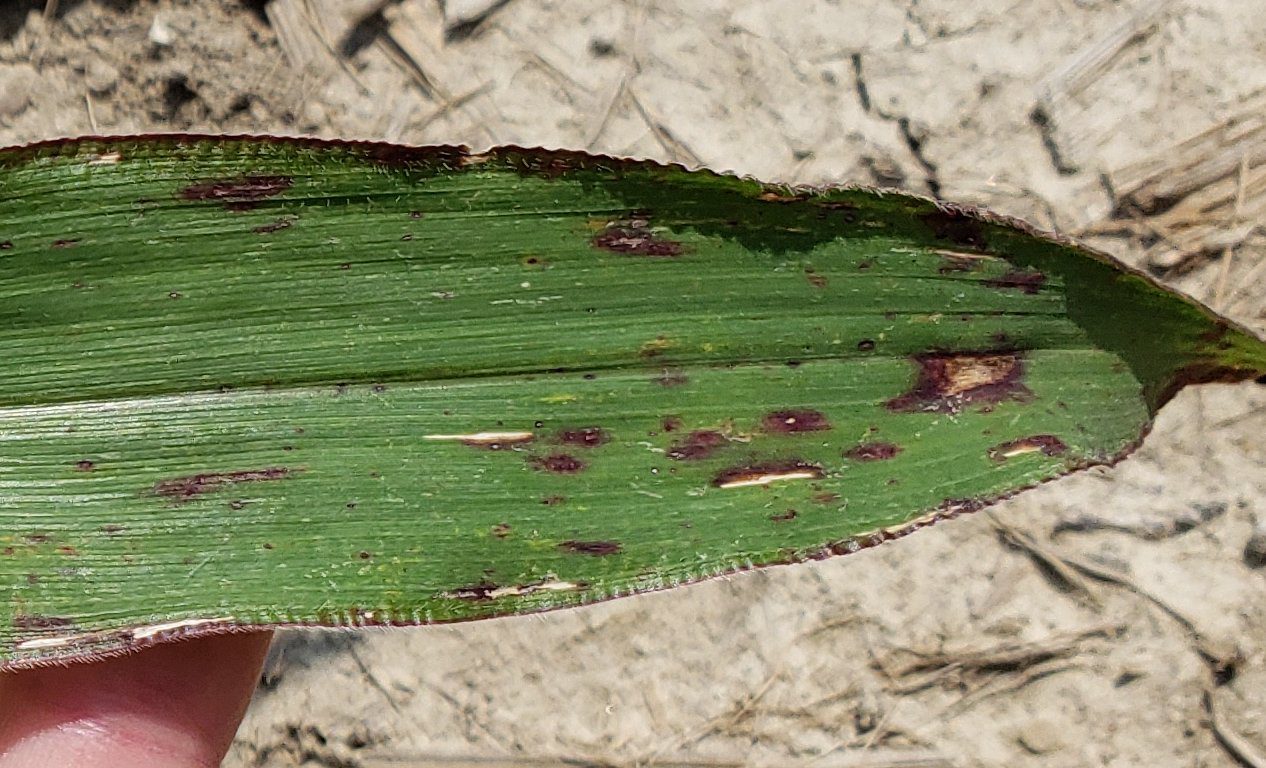Have you ever looked at your crops that seem to be struggling or wilting away and thought, “I wish you could have told me what you needed a week ago.” Well, that thought may not be as far-fetched as you may think.
For Kyle Mohler, this has been his mission since founding Insignum AgTech. While a Postdoctoral Research Associate at Purdue, he worked in a lab that studied the metabolism of plants that were related to pigment production. Building on his experience at his family farm, it got him thinking about whether it was possible to use pigments in the plant to talk.
And now he and his team have made this possible. By creating a new gene from pieces of DNA that already exist in the plant, Insignum has successfully combined two internal systems to transform how we manage crop stress and performance.
Insignum’s Solution: Trust What You Can See
Much like using multispectral imagery to identify stress in a plant, using pigments to identify plant health issues can alert growers to problems before they are visible to the human eye. With Insignum’s technology, purple appears at the site of infection before symptoms can be seen.
“In our tests, every fungal disease that infected the plants triggered a response,” said Mohler. “Our gene activates the pigment production pathway that naturally occurs in plants. When certain stresses occur – in this case, an infection by pathogens – it turns it ‘on,’ meaning you can see purple at the site of infection.”

The image above exhibits the gene in action. The purple spots indicate where disease has begun but not yet killed plant tissue – providing ample time to stop the infection and prevent damage.
For many growers, mitigating stress in their fields can be challenging – especially as the only predictable thing each season is the unpredictability of what’s to come. From intense droughts to issues with pathogens, finding solutions that won’t break the bank to protect yields continues to be a priority.
Precision ag technology has advanced considerably in recent years, providing agronomists and growers tools to offer specific insight into what’s happening in the field. But now, Insignum adds another layer to tell them why it’s happening.
“Oftentimes, there’s an all or nothing approach with fungicides,” said Mohler. “Some growers see this as a risk-management strategy. With our technology, growers can react to problems in real-time when they see the plants change colors – meaning they know which treatment option will work. Some years, disease pressure is low and fungicides aren’t as effective. Our trait can give an indication that treatment isn’t necessary, or possibly, which parts of the field need attention.”
“From rising input costs to limited time, agronomists and growers are seeking solutions to get to the core of issues faster than they could before,” continued Mohler. “With our technology, you can see exactly what’s wrong before your crops are damaged. The purple signal means you can respond quickly and precisely.”
Harnessing the Power of Data & Analytics
Data sits at the core of Insignum’s technology – and speed of collection is critical to uncovering the issue while the window of treatment is there.
“This is where technology like what Sentera offers – aerial imagery combined with machine learning – comes into play,” said Mohler. “They can collect data at scale for growers, who need to analyze this data quickly so they can get to the solution faster.”
Insignum’s ability to pick up on signs of disease or pests transforms what is often a challenging task. Having a tangible and early indication of the problem that can be seen by the naked eye or from the sky is crucial in successfully treating the crops.
From agronomic leaders to growers, Insignum’s technology offers a unique value proposition in helping to drive a more productive and sustainable future. Crops with the Insignum gene will advance stress detection while making precision ag technology more efficient and, in turn, helping growers maximize returns every season.
“What’s exciting is that we’re just getting started,” said Mohler. “We have a few key partnerships that we’re excited to grow over the next few seasons – and more importantly, we look forward to advancing our technology to do more than what it can today. We will continue to evolve crop production to meet our world’s growing needs.”

